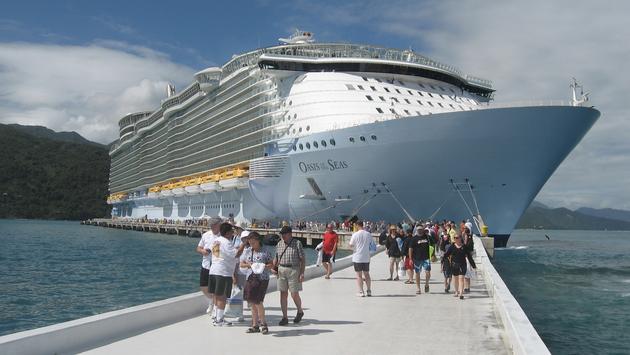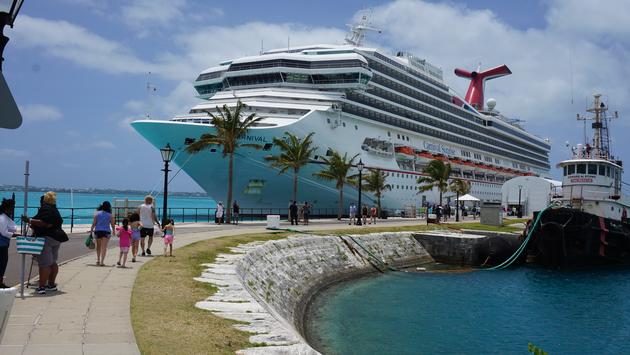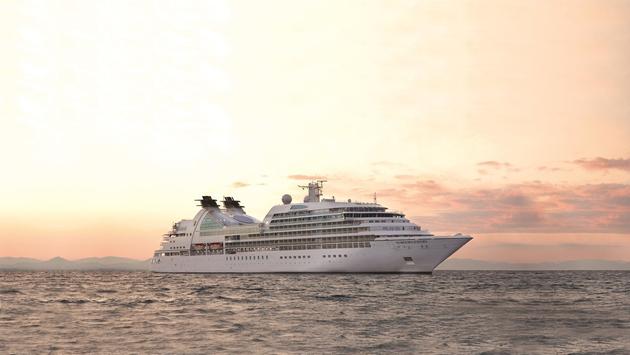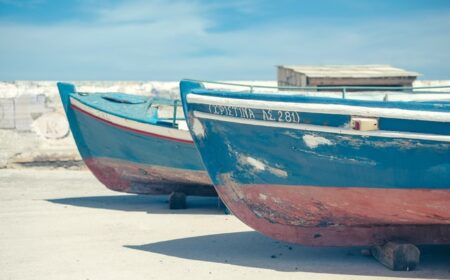
Prior to the COVID-19 pandemic, recent cruise history suggested Royal Caribbean International’s Wonder of the Seas, slated to debut in 2022 as the company’s newest Oasis-class ship, would eventually be eclipsed as the largest cruise ship in the world.
After all, at 225,000 tons and accommodating 5,500 passengers, Oasis-class ships roughly equal the dimensions of Knut Kloster’s Phoenix World City, which in the 1980s represented a then-unimaginable expansion in cruise ship size. It didn’t seem a far leap to consider cruise ships might continue to grow ever larger.
Yet as with every other facet of travel, the coronavirus pandemic has significantly altered cruise operations now and likely into the future. Cruise lines are already shedding some ships and delaying new ship orders.
It’s possible the race to expand cruise ship scale has taken a back seat to more immediate concerns.
“I think you’re looking at an impact that will last, in practical terms, three to five years,” said Rod McLeod, retired chief marketing officer at Royal Caribbean International, regarding COVID-19’s effect on cruise operations. “That means delayed newbuilds, and I think you’re going to see orders for smaller ships,” he said.
“Will we continue to see ever-larger mega-ships?” asked McLeod. “I would be surprised. Royal Caribbean has the Quantum class [measuring 169,000 tons and accommodating 4,180 guests], and that is probably a more utilitarian class of ship for wide-ranging global operations.”
Cruise lines debuted the first 70,000-ton ships in the late 1980s, cruise lines began billing ships as the “largest-ever” in the 1990s, with the debut of ships in the. At the time, the cruise lines’ idea was to create increased space to expand shipboard amenities, facilities and services, enabling cruise vacations to better compete with land-based resorts.
But operators found consumers responded to such designations, with many happy to report to friends and relatives they had sailed aboard the “largest-ever” cruise ship. Years later, the Oasis-class ships are more than twice the size of the 70,000-ton ships some imagined the “largest-ever” cruise vessels.
Yet just as COVID-19 has suddenly forced significant changes in the nature of cruise operations, the pandemic may also provide an avenue for the eventual debut of larger ships.
“If you had asked me this question a year ago I would say we had reached a limit,” said Dr. Robert J. Kwortnik, associate professor of services marketing at Cornell University’s SC Johnson School of Business. “There were big concerns about over-tourism and really big ships in ports that couldn’t support them,” he said.
“But I have a different view of it now. For one, some of these ports and destinations have realized just how important cruise is,” said Kwortnik. “This is an example of what happens when the industry stops. It’s not a theory anymore. Some destinations may now be saying, ‘We know now we don’t need cruise,’
“But there will be plenty of others that are saying, ‘We now realize how important cruise is to our tourism market,’ Kwortnik said. “I see where some people in Venice are now upset the tourism economy has declined. So there may be less reluctance with regards to bigger ships.”

He added, “The other thing is the larger ships are so much more efficient and have better economies of scale. Royal Caribbean held a recent earnings call where Jason Liberty, the chief financial officer, said some of the newer, larger ships can break even at 30 to 40 percent occupancy,” said Kwortnik.
“I thought that was really interesting because now you look at an Oasis-class ship and say ‘We could run that at 50 percent occupancy and operate at a profit. Plus, it’s so much bigger that [operators] can social distance aboard this ship better than aboard a much smaller ship. These ships at least permit social distancing.
Of course, said Kwortnik, the hope is cruise companies won’t be compelled to build increasingly larger mega-ships solely to combat COVID-19 pandemic concerns.
“Let’s hope we get to the point we don’t have to do this anymore, but if there is an emergency where we now need to separate people, there’s just more space,” he said. “I don’t think the companies were ever thinking ‘We can socially distance better with these ships,’ but it may turn out to be a silver lining.”
And other industry experts continue to say there’s no reason to expect cruise lines to restrict the size and scope of future ships. “There’s no reason we’ve reached the limit. Limits are a figment of our imaginations,” said Stewart Chiron, a veteran Miami-based cruise retailer whose agency is known as The Cruise Guy. “
“When I got into the cruise industry 31-plus years ago, Sovereign of the Seas was the largest cruise ship in the world at 73,000 tons. It plateaued for almost a decade, with ships exceeding that by only 1,000 tons or so,” he said. “Now we have ships at 229,000 tons.”
Chiron added, “The size of ships is limited only by imagination, ability to fill them, and the ability of homeports and destinations to receive them.”



